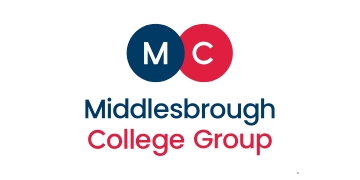Since the mid-1990s, policymakers have tended to look earlier in the system for solutions to tackling persistent inequality in education. But not only has this come at the expense of post-16 education, new evidence suggests the approach of dismissing the later years needs reevaluating.
The rationale was fuelled by neuroscientific studies which first emerged in the 1970s and indicated that the first ‘window of opportunity’ for learning is in early childhood. As a result, many educators and policymakers came to believe that stopping gaps in cognitive outcomes emerging by the age of five would stop the attainment gap from appearing later in education.
But neuroscience today is not the same as it was in the 1970s, or even the 1990s. The latest studies show that late adolescence is, in fact, another window of opportunity for learning.
Moreover, robust early education studies show that the positive benefits yielded from intervening early are at risk of fading over time if there is a lack of support running throughout the education system.
Not keeping up with science has come at a significant cost to other parts of the education system. Back in 2014, when the Department for Education’s budget was cut, then-secretary of state Michael Gove decided that it was 16-19 funding that would reduce. He described this as ‘the least detrimental option’.
But this approach has seen further education experience the largest cuts in funding of any phase of education in the decade after 2010. Even now, further education remains a non-protected government budget.
Today, a new report by the Education Policy Institute reveals the damage this lack of focus and funding has had on state-education for 16- to 19-year-olds.
The report finds that students from economically disadvantaged backgrounds are over three grades behind their peers by the time they finish 16-19 education. This gap, it shows, is not only a result of the educational inequalities students from low-income families experience in school or earlier. These students are falling further behind during the post-16 phase.
The report also finds that as young people from disadvantaged backgrounds transition from secondary to post-16 education, the funding their college or sixth form receives to support their education drops by over one-third.
FE is effectively missing funding for over one-quarter of 16- to 19-year-old
In part, this is driven by the absence of pupil premium funding after the age of 16. Further education settings are effectively missing funding for over one-quarter of 16-19-year-olds. As the authors point out, the attainment gap continues to widen beyond the age of 16 and there is no clear rationale for this funding cliff-edge.
Remarkably, the report’s investigation shows that over the past two years, less than one-third of further education colleges used the existing tool available to them to identify which of their students were economically disadvantaged.
This would be unthinkable in a school. If Ofsted inspectors arrived and a school did not have this information about its student cohort, it would struggle to meet the criteria for a ‘Good’ or ‘Outstanding’ judgment. Yet Ofsted judges 91 per cent of further education colleges to be in those two categories.
This is not the fault of colleges, whose leaders do their best with the few resources and little funding they have. The truth is that our accountability system, like the wider education system, simply doesn’t place the same significance on post-16 education as it does on other phases.
The Education Policy Institute is right to start with the absence of a 16-19 pupil premium to point this out, but there is much more evidence than that.
For example, one of the hottest topics in education policy in the run-up to the election has been the removal of the VAT exemption for private schools. But it has barely been mentioned that colleges – part of our state education system – are not exempt from VAT.
Meanwhile, teacher recruitment challenges are greater in colleges than in schools. However, college teachers are paid on average £7,000 less than their school counterparts and interventions to support schools like Teach First have never been given a contract to place teachers in further education.
Deprioritising a compulsory part of our education system is not just unethical, it is wrong. Science tells us that we can’t fix inequality in education early and avoid all problems later. Interventions to sustainably address education inequality must exist across the whole education system.
Post-16 education is the last moment in the compulsory education system to set young people up with the qualifications they need to thrive in life. The sector has tremendous potential to address existing attainment gaps and break down barriers to opportunity.
For all these reasons, I wholeheartedly endorse the Education Policy Institute’s recommendation for a 16-to-19 pupil premium. I hope policymakers take note.
Read the EPI report, Implementing a 16-19 pupil premium in full here
















Your thoughts